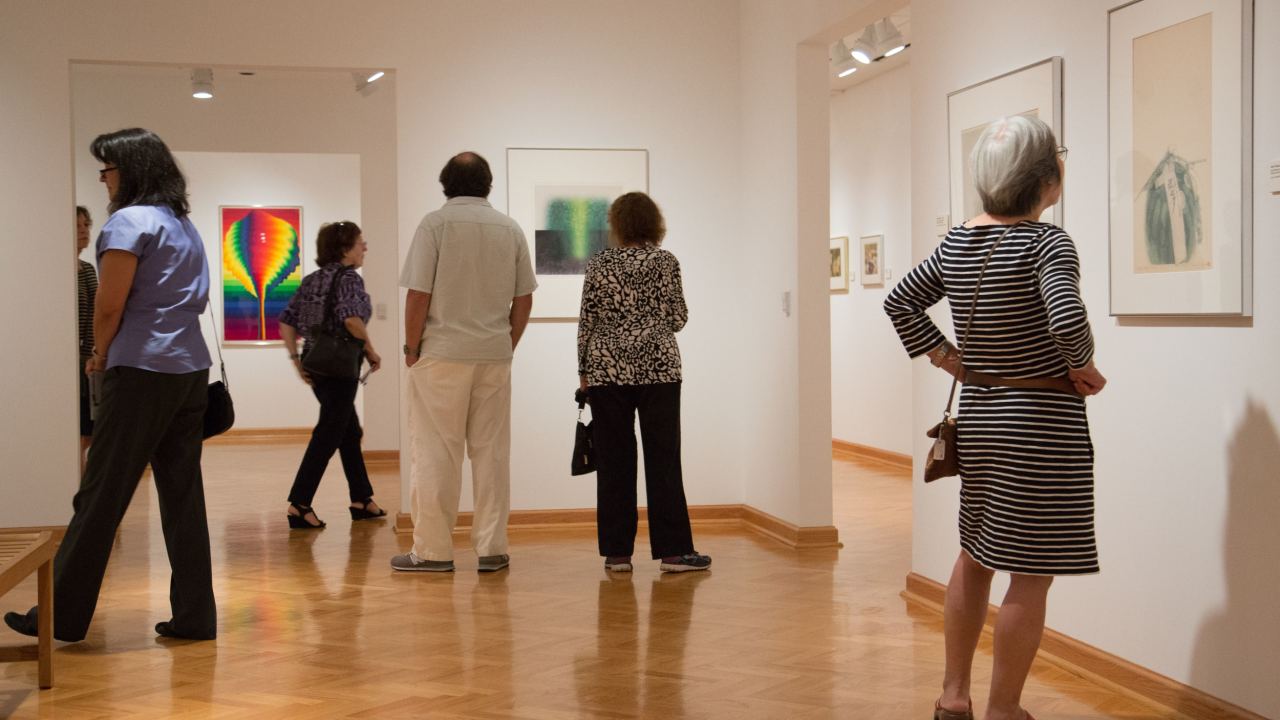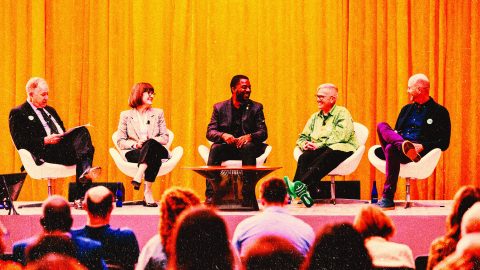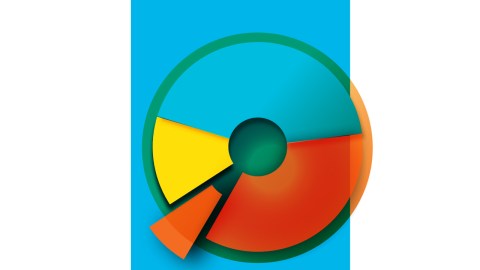
Accreditation helps museums focus their purpose, refine their practices, and build their futures. But some museums, particularly those with small staffs and budgets, might consider it challenging amid their other responsibilities and commitments. Still, success stories like the recent accreditation of The Art Museum at the University of Saint Joseph, which has two full-time staff members, show that it can be done. We asked Ann H. Sievers, the museum’s director and curator, to share why the museum sought the mark of distinction and how they made it work with the resources they had available.
Tell us about the museum and your role there.
I began work as director/curator of the Art Museum at the University of Saint Joseph (USJ) in late fall 2002. Although the art collection was established in 1937, the university’s first purpose-built museum facility opened only in 2001 in a building that also contains the performing arts center. I replaced the first director of the collection, who had just retired, having seen through the design, construction, and opening exhibitions of the new facility. My remit was to professionalize operations, provide a vision for the new museum, integrate it into the academic life of the university, provide lifelong learning opportunities to the community, and guide the growth of the collection—all with one full-time collections manager/registrar and two part-time gallery attendants (our visitor services & guard staff).
Since 2002, we have grown our roster of gallery attendants to cover additional open hours, secured undergraduate and graduate student assistants, and doubled the size of the permanent collection. As director/curator, I am not only the museum’s chief administrator, but also organize exhibitions and grow the collection. I also serve as the primary museum educator, unless we secure grant support for specific educational projects. My collections manager/registrar also assumes additional duties, such as managing our membership program and contributing to our marketing efforts.
Why did you pursue accreditation?
The Art Museum’s collection is remarkably strong for a small university. It includes paintings by major American artists of the early twentieth century (e.g., Thomas Hart Benton, Georgia O’Keeffe, and Milton Avery), as well as a collection of works on paper spanning six centuries.
It seemed evident to me that a small academic museum that was not yet well known in its own community, let alone regionally and nationally, would benefit greatly from the recognition AAM accreditation would confer. As a small but ambitious museum with a very modest budget, our ability to secure loans from major institutions and compete successfully for outside funding depends in part on others’ perception that we are a fully professional operation. AAM accreditation provides this assurance. As we were committed to operating professionally from the very beginning, we focused on establishing the policies, procedures, and programs that would make us eligible for accreditation. We used the goal of accreditation to help us develop a strategic plan to ensure our adherence to museum standards and best practices.
Was it difficult to handle the requirements for accreditation while operating the museum with a very small staff?
I don’t want to minimize the time and effort it took my small staff to meet the requirements for accreditation. It called for dedication and sustained effort over a number of years. Because we were all committed to operating to the highest professional standards, however, we integrated our efforts into our ongoing process of planning, evaluation, and improvement. As an academic museum that trains students and young professionals in museum work, we feel the responsibility to model best practices. Rather than impose a particular deadline on ourselves, we moved systematically to address collections management, facilities improvements, exhibition planning, and educational programming, knowing that we would apply for accreditation whenever we were sufficiently prepared.
What systems did you put in place to help keep you on track through the accreditation process?
Thanks to a previous curatorial position, I was able to bring experience with the accreditation process to the Art Museum at USJ. Luckily for us, the process has been revised to make it much easier for a small museum to manage. Because the Art Museum in most respects was still a start-up operation in 2002, we built gradually toward accreditation.
We started by recruiting a couple of volunteers to help establish a Museum Advisory Committee and assist in the drafting of professional policies. Since then, the Advisory Committee has provided expertise (e.g., curatorial, legal, marketing), support (loans and gifts of art; financial support) and advocacy. An initial staff retreat kicked off the process of museum strategic planning, which has also been coordinated with the university’s strategic planning process.
Our first CAP report helped us obtain an IMLS grant for collections care, and our first MAP provided us with an assessment of our overall operation; a second CAP studied specific facility issues that remained of concern, while the self-study and report resulting from a second MAP assured us that we were becoming well-prepared to apply for accreditation.
Especially helpful to us was the AAM’s new Continuum of Excellence approach. The first step (the Pledge of Excellence) was easy! Core Documents Verification, a separate second step, enabled us to continue the methodical approach to improvement that we had initiated in 2002. Although in managing the museum we consistently adhered to our written professional policies, they had never been formally approved by the university’s Board of Trustees. The Continuum of Excellence allowed us to gain board approval for our policies and complete AAM Core Documents Verification before having to start the one-year clock on the accreditation self-study. We were able to stage our application and self-study at the best possible time. Regular staff meetings and Advisory Committee meetings kept us on track once we began the final stage in the accreditation process.
What role did the university play as your parent organization in making your accreditation a success?
For an academic art museum to achieve accreditation, it is crucial to educate the parent college/university and secure administration and board of trustee support. Although colleges and universities are well-acquainted with academic program accreditation, they are often less familiar with the standards of the museum profession and unsure of the benefits to the parent institution of securing museum accreditation.
In our case, a number of significant changes in university administration made securing trustee and administrator support for accreditation a gradual process. The extent to which the Art Museum was able to serve academic programs across the university curriculum certainly helped us make our case. It also helped to have a respected University of Saint Joseph trustee on the Art Museum Advisory Committee to serve as liaison between the two bodies. We demonstrated that we were able to bring in grant funding as well as attract support from individuals who were not previously involved with the university. We also helped the university serve the Greater Hartford community. As director of the museum, I previously reported to the provost and now report directly to the university’s current president. With the strong support of both, we secured Board of Trustee approval for our current mission statement and other core documents, endorsement of our name change from “Gallery” to “Museum,” and authorization to apply for accreditation. By the time of our accreditation site visit, we were confident that we could rely on an informed and supportive parent institution.
How does it feel to be accredited? What are you looking forward to now that it’s done?
It feels great! The Art Museum staff feels a sense of accomplishment and are gratified that their hard work has been recognized. University trustees, administrators, and faculty are proud. Our members and community partners are extending their congratulations and their continuing support. We are already beginning to see some of the anticipated results of accreditation, including the ability to secure major loans. We hope we will also be able to access new funding sources that will help us address our ongoing challenges. Our pause for celebration has been delightful but brief—we are already using the Accreditation Commission’s letter and the Visiting Committee’s report to help us plan our next phase of growth and improvement.
What would you say to other museum administrators considering accreditation, particularly those who might think their museums are too small or their staffs too overworked to handle it?
If we can do it, so can you!
Even if your museum doesn’t yet have written and formally approved policies, you undoubtedly have a wide range of procedures you already follow that can be recorded, reviewed, and revised as necessary to create the core documents expected by AAM. Institutional membership in AAM, your regional museum organization (for us it was NEMA), and—for academic museums—AAMG are cost effective and provide superb support, from policy statements and examples of core documents to networking and professional development opportunities. Take advantage of programs such as CAP and MAP to gain expert analysis of your museum’s operation and recommendations that can help you secure grant funding to address the museum’s needs. The time and effort you invest in these programs will be worth it and will move your museum step-by-step toward accreditation. You don’t have to rush—you can make planning and review processes already in place the basis for gradual progress. Once you begin the formal accreditation process, you will be encouraged and ably assisted by the AAM staff—they want you to succeed!








An excellent article, and terrific achievement–congratulations.
What transpired with the AAM program Small Museum Accreditation Academy?
Is something comparable currently offered by AAM?
Hi Jenine, thanks for asking! That was a pilot project that didn’t ultimately work as envisioned, so we ended it. You can read more about it here.
Congratulations on a job well done, Ann!